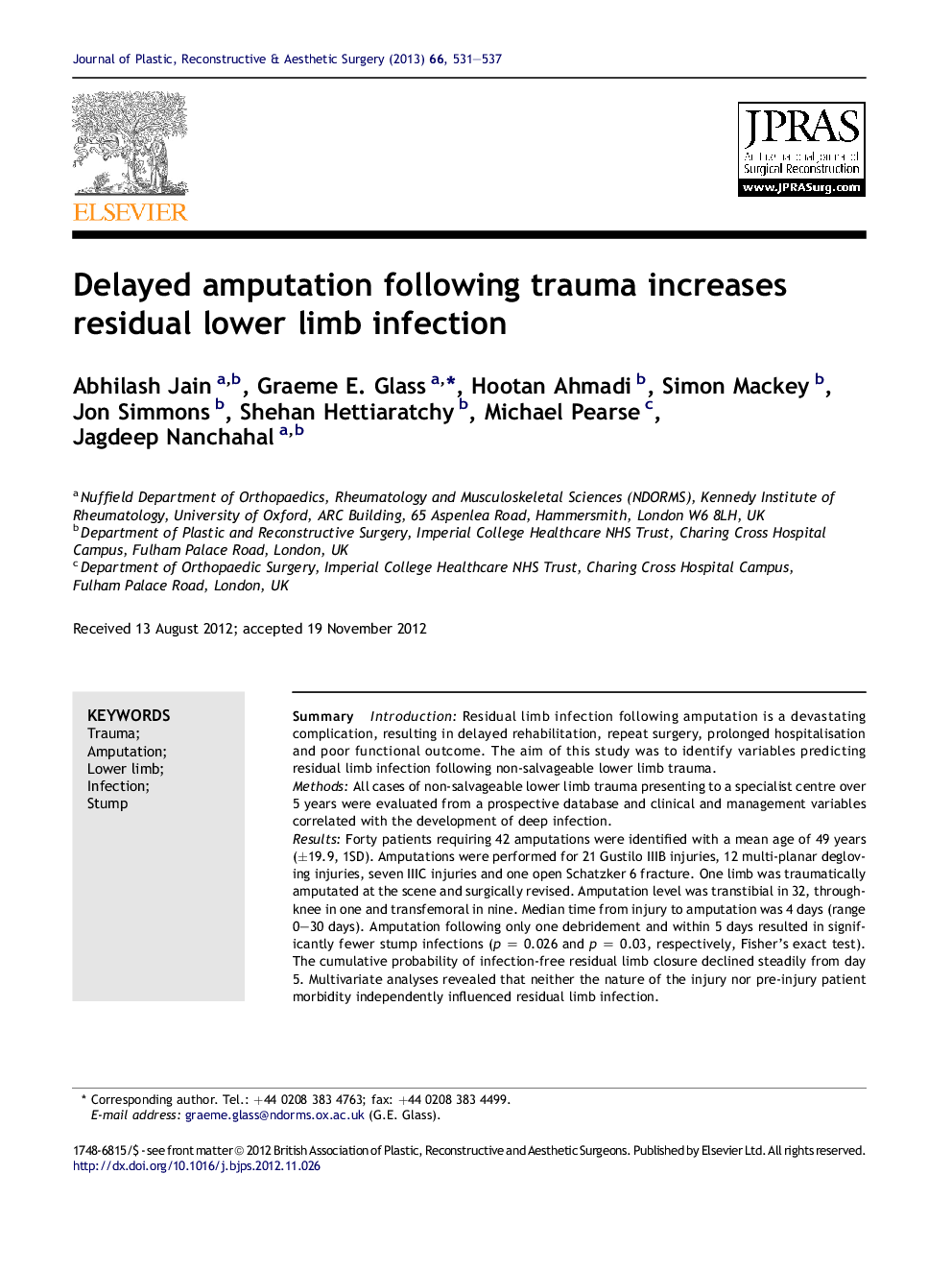| Article ID | Journal | Published Year | Pages | File Type |
|---|---|---|---|---|
| 4118415 | Journal of Plastic, Reconstructive & Aesthetic Surgery | 2013 | 7 Pages |
SummaryIntroductionResidual limb infection following amputation is a devastating complication, resulting in delayed rehabilitation, repeat surgery, prolonged hospitalisation and poor functional outcome. The aim of this study was to identify variables predicting residual limb infection following non-salvageable lower limb trauma.MethodsAll cases of non-salvageable lower limb trauma presenting to a specialist centre over 5 years were evaluated from a prospective database and clinical and management variables correlated with the development of deep infection.ResultsForty patients requiring 42 amputations were identified with a mean age of 49 years (±19.9, 1SD). Amputations were performed for 21 Gustilo IIIB injuries, 12 multi-planar degloving injuries, seven IIIC injuries and one open Schatzker 6 fracture. One limb was traumatically amputated at the scene and surgically revised. Amputation level was transtibial in 32, through-knee in one and transfemoral in nine. Median time from injury to amputation was 4 days (range 0–30 days). Amputation following only one debridement and within 5 days resulted in significantly fewer stump infections (p = 0.026 and p = 0.03, respectively, Fisher's exact test). The cumulative probability of infection-free residual limb closure declined steadily from day 5. Multivariate analyses revealed that neither the nature of the injury nor pre-injury patient morbidity independently influenced residual limb infection.ConclusionAvoiding residual limb infection is critically dependent on prompt amputation of non-salvageable limbs.
